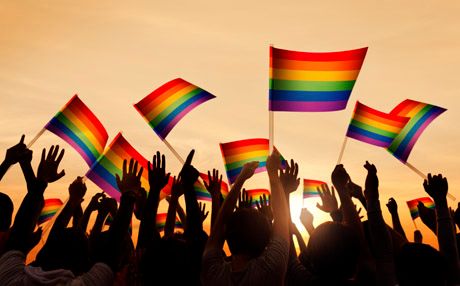Stigma and discrimination still exist. Although Filipino Drag Queens continue to rise to the occasion, battling not only the limitations of society but also those within the LGBTQ+ community, they are also harbingers of change. The drag culture in the country is more than a spectacle. It's a social revolution ... where love, acceptance and individuality reign supreme.
Filipino Drag Queens occupy centerstage in this Pride Month. They are defying conventions, reshaping the definition of masculinity and femininity and challenging societal norms through the way they express themselves with fantabulous costumes and in their performances extraordinaire.
The spotlight is focused on a group of artists who are redefining gender norms and cultural expectations.
Drag is an art form with roots deeply embedded in LGBTQ+ culture, is starting to dominate mainstream entertainment in the Philippines, disrupting conventional norms and sparking a larger conversation about gender identity and self-expression.
From the bustling streets of Manila to the sandy shores of Boracay, the flamboyant spectacles of Filipino Drag Queens have become a commonplace sight. They are pushing boundaries, expressing themselves through vibrant costumes, exaggerated makeup, and explosive performances, often paired with wit, humor, and a powerful message.
Drag is not merely a performance but a declaration of individuality. It's an unabashed portrayal of fabulousness, representing a part of the LGBTQ+ community that continually fights against stereotypes and societal pressures.
Filipino Drag Queens are defying conventions, reshaping the definition of masculinity and femininity, and challenging societal norms through their performances.
The rise of drag in the Philippines could be partially attributed to the popular reality TV show, "RuPaul's Drag Race," which provided a global platform for Drag Queens and revolutionized the perception of drag culture. This influence, however, is not an instance of Western culture overpowering local traditions. Instead, it has resulted in a unique fusion of western drag and Filipino culture, creating an idiosyncratic style that combines the flash and sass of Hollywood's drag scene with the local bakla tradition and the resilience of the Filipino spirit.
The bakla tradition, often misinterpreted as synonymous with gay men, is a cultural phenomenon that refers to Filipino individuals who take on traditionally feminine roles in society, irrespective of their gender identity.
The vibrant and unabashed persona of Drag Queens aligns well with this local tradition, resulting in a uniquely Filipino interpretation of the art form.
Challenging
Unfortunately, the growth of drag culture in the Philippines is not without its challenges. The society remains deeply Catholic, with conservative beliefs about gender and sexuality that often contradict the spirit of drag.
Stigma and discrimination still exist, and the road to acceptance is still a steep climb. But Filipino Drag Queens continue to rise to the occasion, battling not only the limitations of society but also those within the LGBTQ+ community.
They are harbingers of change, reminding us all that identity is not a binary concept but a spectrum of endless possibilities.
In conclusion, the drag culture in the Philippines is more than a spectacle. It's a social revolution ... where love, acceptance and individuality reign supreme.
